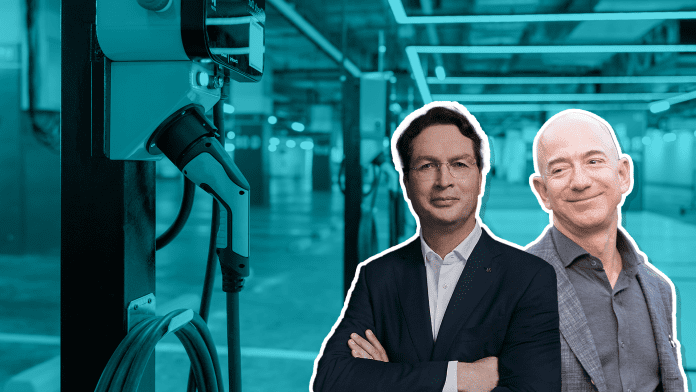Last Thursday, Amazon and Mercedes revealed new projects targeting electric vehicle accessibility in the U.S.
Experts have continually raised red flags over the auto-industry’s EV ambitions, warning that drivers will need better access to battery-powered cars before warming up to the technology. A major concern for analysts is the nation’s under-funded charging network, which has largely failed to expand outside of major cities. Additionally, given that the product is still in its infancy, new owners of electric vehicles have few resources at their disposal to properly navigate trips and avoid running out of electricity on the road. Consequently, many brands in and out of the auto industry have announced projects to either add charging stations, or make them easier for drivers to locate. The projects announced by Amazon and Mercedes tackle these concern in separate ways.
Amazon’s goal is to improve the compatibility of its Alexa voice assistant with electric vehicles. In partnership with EVgo, a leading charging station brand in the U.S., the e-commerce brand is launching a feature which will locate the most accessible EV chargers based on a driver’s trip, and will even allow them to make purchases through an on-board interface. The service will assist consumers experiencing range-anxiety, by allowing them to plan trips in accordance with their needs. Meanwhile, the German automaker’s plan will add to the 140,000 charging stations across the U.S. Globally, the luxury brand will be constructing 10,000 new installations, with 2,500 expected to arrive in North America by 2027, an initiative it expects to cost over $1 billion. In their separate announcements, both companies highlighted the fact that their products would be available across multiple auto brands.
Amazon and Mercedes are one new addition to the nation-wide push to improve energy infrastructure, stimulated by the Biden Administration’s generous incentives and automaker investments totaling well over $1 trillion. That being said, the U.S. has a long way to go before its charging accessibility issue is fully solved.
Did you enjoy this article? Please share your thoughts, comments, or questions regarding this topic by connecting with us at newsroom@cbtnews.com.
Be sure to follow us on Facebook, LinkedIn, and TikTok to stay up to date.
While you’re here, don’t forget to subscribe to our email newsletter for all the latest auto industry news from CBT News.




